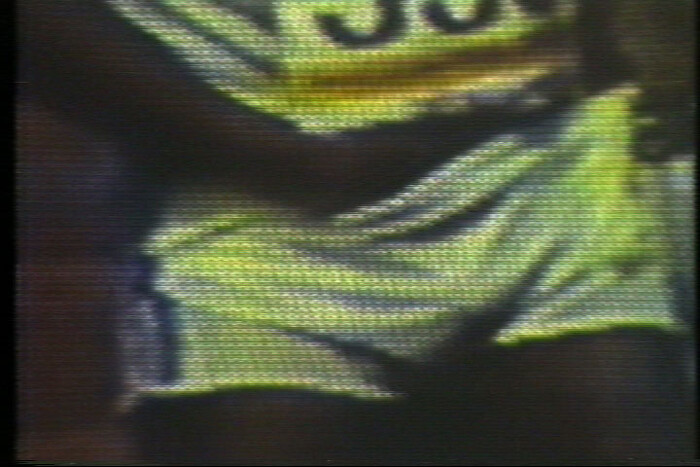June 24–August 13, 2010
Michel Auder’s current New York exhibition could be called “epic,” if his approach weren’t so far removed from any claims to grandeur. There are samplings from four decades of film and video, shown as single- and multi-screen installations, accompanied by film stills, polaroids, postcards, and the occasional rooster lamp. The show is divided among Chelsea galleries Zach Feuer and Newman Popiashvili, and Lower East Side non-profit Participant Inc., with a supplemental screening at Anthology Film Archives (and even a Los Angeles outpost at Volume2). There, is quite simply, too much to take in, unless you’re willing to slow down to the leisurely, attentive-yet-scattershot pace of Auder’s camera.
Since the late 60s, Auder’s medium has been video. His tapes are documents of a life obsessively viewed through the camera lens, making him a pioneer in an art form that wouldn’t be regularly exhibited in galleries until two decades later. He works in the tradition of cinema vérité, but his form is never merely diaristic. The art lies in the light touch of his editing, which extracts immediacy, absurdity or accidental drama from his daily encounters. Every representation of reality, Auder knows well, is in some sense a fiction—just as any survey of an artist’s work is inevitably inaccurate.
At Zach Feuer, we find Auder the observer-voyeur. The Games: Olympic Variations (1984) is made of snippets of the 1984 Seattle Olympics taped from the television. I remember countless crotch shots: framed, slowed, repeated, and re-edited, Auder scrambles the staid language of television. The Feuer show is organized by artist Kate Levant, and her sculptural installations provide enveloping plinths for many of the videos: their rough-edged, handmade quality bridges the gap between the clinical white box of the gallery and the lo-fi look of videotape.
Voyeurism is emphasized in works like Rooftops and Other Scenes (1996), where the camera peers through railing, trees or windows. But there is an intimacy to Auder’s search for unguarded behavior, whether it’s his neighbors having oral sex on their rooftop or the toy car cradled in a sleeping child’s hand. The intimacy is partly achieved through long durations: while Rooftops flits from one subject to another for about an hour (all three venues should be commended here for their comfortable seating), the semi-autobiographical opus that is The Feature (2009, directed by Auder and Andrew Neel), runs to just under three hours.
Newman Popiashvili hosts two recent works. The five-monitor Narcolepsy (2010) uses updated tools, including footage from mobile phones and underwater cameras. What caught my attention was less the enhanced images than the sounds, such as the thundering boom of a running faucet filmed from below, giving a new dimension to his poetic-associative style. Directly opposite is Heads of the Town (2009), portraits of Auder’s circle through the decades, with quite a few celebrity spottings, particularly the cult around Andy Warhol’s Factory.
Auder’s work is often explained through his literal and stylistic proximity to Warhol. Warhol Superstars Viva and Louis Waldon are the main subjects of Auder’s first film with synched sound, Keeping Busy (1969), which was billed as “a film novel about what they did to keep busy.” (Lounging about expensive hotel rooms, mostly.) But if Auder’s videos parallel Warhol’s films in their (in)action, they are less bound to a conceptual premise, less performed, and more personal.
Auder’s Warhol connection is more visible at Participant Inc., in works like Chelsea Girls with Andy Warhol, 1971-1976 (1994), which interrogates Warhol through his interactions with others. The show opens with televisions placed at various heights, showing a “remix” of early films and tapes. Further beyond, a large screen features a rotating schedule of longer works (and yes, there is a couch). The Participant show, installed in close collaboration with Auder, is the more historical segment of the survey, and shows how the videos work both alone and in relation to each other.
One could fault Auder’s work for all the narcissistic shortcomings of video, for the self-centeredness of the author and his subjects, for the unreasonableness of the durations, for their lack of focus and rambling structures. But these are integral components of his process and crucial to achieving their intuitive effect. The deliberate fluidity of his approach is revealed only through an immersion in decades of recording and editing. This survey, however, allows his subtlety and range to play out on its own terms and in its own—extended and fragmentary—time.




